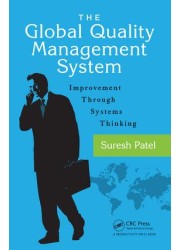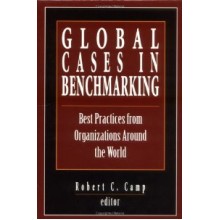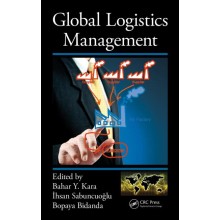The Global Quality Management System: Improvement Through Systems Thinking
Quantity:
-
Add to Compare
The Global Quality Management System: Improvement Through Systems Thinking shows you how to understand and implement a global quality management system (GQMS) to achieve world-class business excellence. It illustrates the business excellence pyramid with the foundation of management systems at the system level, Lean System at the operational level, Six Sigma methodology at the tactical level, and business excellence at the strategy level.
Throughout the book, the author stresses the importance of the process—its identification, definition, improvement, and control using "turtle diagrams" and its extension to supplier, input, process, output, and customer (SIPOC) diagrams. The processes discussed include the human resource (HR) process, finance process, project management process, and the important "process of improving the process." The author also includes advanced processes to comply with ISO 9001, ISO/TS 16949, and AS 9100 standards, and elaborates on management improvement through extensive plan–do–check–act (PDCA) analysis and the problem-solving methodology involving the famous eight disciplines process ("8D").
As you put this book of knowledge into practice, you will discover the shifting roles of leaders and managers in your organization. It is not enough for leaders to merely continue past practices or support the work of others. Rather, leaders must lead the cultural transformation and change the mind-sets of their associates by building on the principles behind these excellent tools.
Table of Contents
Homage to Quality and Lean Six Sigma Gurus
Origins of Quality
Quality Management System as a Management Strategy
The Business Excellence Pyramid
Quality Management System as a System-Level Strategy
Change to the System Is Required to Change the Performance
If Your System Will Not Let You, You Cannot Satisfy the Customer Fully
Quality Management System
ISO
The ISO 9000 Family
Function of the Management System Standards
Steps to Implement QMS
Arrival of ISO 9001:2015
Quality System Documents
The Global QMS Processes
Records Required by ISO 9001:2008
Identification and Improvement of Processes
Introduction
Turtle Diagrams
Charting Processes to Control Process Variables
The Finance Management Process
The Project Management Process
The Purchasing Process
The HR Process
SIPOC Diagrams for Performance Management
Generic Process to Improve a Process Using Plan– Do– Check–Act—Fix, Focus, Flex
Global Quality Audit Processes
Process Control Plan Audit (PCPA)
Audit Points Allocation Method for Each Criterion
Explanations of Actions Required for Each Point
Audit Guide for Each of the Nine Areas
Conduct Additional Audit for the Eight Management Principles
Audit of Eight Management Principles Based on ISO 9001:2008
Global Quality Management System Processes
Management Review Process
Quality Training Process
Change Control Process
Processes to Identify Special Characteristics
Supplier PPAP/FAI
Supplier Quality Management Process
Failure Mode and Effects Analysis for Product Design and Production Processes
Process Control Plans
Measurement System Analysis
"Fresh Eyes" Audit
Common Manufacturing and Special Process Audit
Process Capability Methods and Requirements
Control of Nonconforming Material
Performance Analysis and Improvement Process
Corrective and Preventive Action Process
Quality Alert System
Risk Management
Fast Customer Response
Scope
Purpose
Responsibility
Benefits
Problem Identification
Problem Solving
Problem-Solving Process Definition
Problem Definition
Problem-Solving Principles
Eight Disciplines (8D) Problem Solving
What Is Eight Disciplines?
Description of the Disciplines
Lessons Learned Process
Drill Deep/Drill Wide Method for Permanent Corrective Action
Objective
Describe the Problem
WHY Process
Why Most Quality Problems Occur Again and Again
Root Causes Relating to "PREVENT"
Root Causes Relating to "PROTECT"
Root Causes Relating to "PREDICT"
Drill Wide and Institutionalize
Quality Operating System: The Engine That Perpetuates Continuous Improvement
Purpose of QOS
What Is QOS?
Understanding QOS
The QOS Meeting
QOS Assessment
Conclusion
Appendix: Quality Manual
Glossary
Bibliography
Write a review
Your Name:Your Review: Note: HTML is not translated!
Rating: Bad Good
Enter the code in the box below:
Copyright © 2014 Engineering Standards Bureau. All Rights Reserved.
Developed By Zoom Into Web








